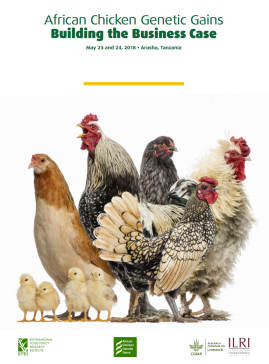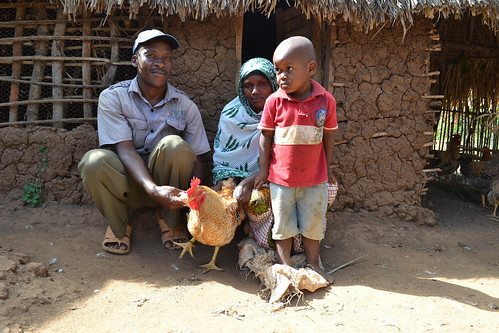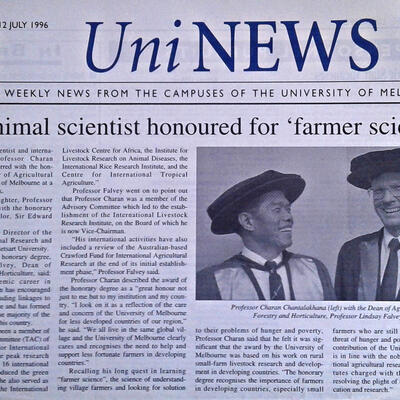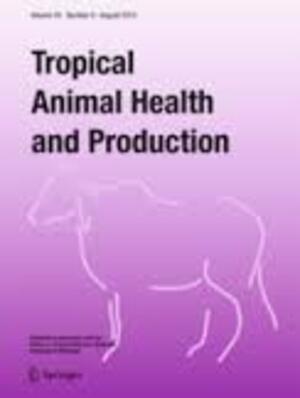
Building the business case for smallholder poultry development (part 1): Taking stock of ACGG ‘1’
In the course of 2018, the African Chicken Genetic Gains (ACGG) project team held an important meeting in Arusha, Tanzania (23-24 May) in order to capture the ‘business case’ for smallholder poultry development at large, building upon key lessons from ACGG so far, and looking into options for a potential ‘ACGG+’ follow-up program.
Twenty-four participants from the project team globally, and from Ethiopia and Tanzania, as well as representatives from the International Food Policy Research Institute (IFPRI) took part in the gathering. Together, they undertook to:

Cover of the African Chicken Genetic Gains: Building the business case report (photo credit: ILRI).
- take stock of critical research outcomes from ACGG to ensure market readiness along the chicken value chain in Ethiopia and Tanzania;
- describe and discuss the supply chain and its bottlenecks for the chicken genetic gains business case; and
- discuss broad outlines of the development outcomes of the next phase of ACGG+ (more on this will be covered in a subsequent post).
Some conclusions from the ACGG project’s work so far
The ACGG project has contributed significant poultry productivity gains (up to 300% chicken body weight increase, and 100-160% increase in egg production) in project sites. These results need to be further supported. Particularly, private sector actors are expecting ACGG to continue engaging in poultry genetic innovation.
There is considerable potential to build upon ACGG: There is a huge unmet domestic demand for chicken meat and egg; a conducive policy environment, including availability of progressive national livestock strategies; greater engagement of the private sector in the chicken value chain; and enhanced possibilities for public-private partnerships, specifically by moving the new technologies to market.
The participants also highlighted some of the limitations of the current program that ought to be addressed in the future: In terms of supporting the chicken value chain, issues requiring further reflection include operationalizing business incubation centres; instituting poultry insurance; and providing capacity development virtually to the myriad of value chain operators.
Among participants were information and data analysts Jawoo Koo and James Thurlow from IFPRI. They introduced some analytical tools that could help evaluate a range of approaches and options, including market potentials, value chain options, investment trade-offs and development outcome scenarios.
There was consensus in the room that ACGG has pioneered some very important work in improving chicken production (including in the program’s engagement with stakeholders through innovation platforms, which have been set up in all three project countries.
But there was also consensus that this was only a first step.
The discussion on strategic engagements of ACGG made it clear that ‘getting the genetics right’ approach that ACGG has pursued so far constitutes the necessary, but not the sufficient, condition for enabling smallholder farmers to benefit fully from the chicken value chain.
How ‘ACGG+’ may take advantage of ACGG’s legacy and of forthcoming opportunities is an ongoing conversation.
Read more about this in the second part of building the business case for ACGG post.



















